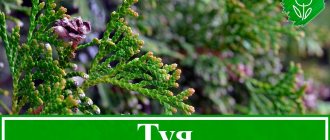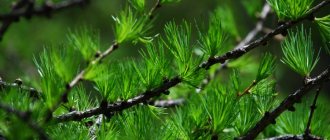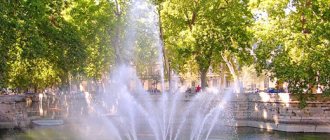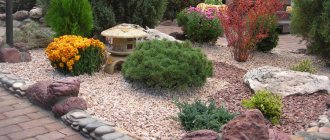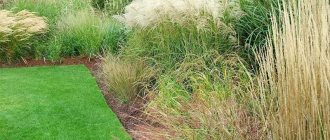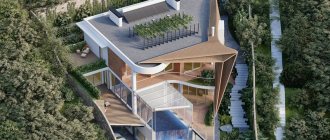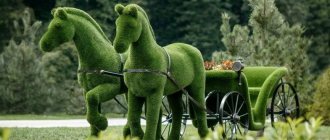The status of exclusivity and eliteness inherent in bonsai does not change today. High prices, many years of formation, labor and love invested in miniature copies of trees and shrubs give them a special magic. And if previously bonsai was considered a status attribute of luxury, today it is spreading more and more, overcoming any cultural and social boundaries. And the choice of plants and bonsai species is also becoming more representative every day. But not all varieties are suitable for those who are just beginning to get acquainted with this amazing art.
Story
The original idea to create a Japanese bonsai tree belongs to China. It was there that the unusual art of “Penjing” was born. There is a long-standing legend that a certain ruler wanted a small empire that would have trees, mountains, and rivers. When the subordinates began to carry out the order, they liked the potted trees so much that they decided to create copies and keep them.
It is not known for certain whether this is true or not, but there are obvious facts: Buddhist monks were the first to use the home bonsai tree. Later they were used during ceremonies.
Japanese euonymus
The favorite garden shrub, Euonymus japonicus, does not lose its charm in bonsai. Of all the types of euonymus, the Japanese euonymus creates the most attractive silhouettes, forming charming single-trunked or multi-trunked living sculptures.
Japanese euonymus is used for living rooms, greenhouses and staircases with foyers.
Japanese euonymus in bonsai form is represented by small-leaved and variegated forms; yellow-leaved aurea are also often found. This densely bushy plant with dark bark allows the formation of multi-stemmed trees, but even when creating a solitary “tree”, the euonymus surprises with its grace and complexity of silhouette.
The bark is dark, matte, very attractive, the lower part of the shoots is usually bare, and the crown seems weightless and very light. The height of euonymus ranges from 15 to 50 cm. The leaves are typical for this plant, oval-lanceolate, glossy, with dark, variegated or bright colors. This type of bonsai blooms in June-July.
Good lighting is necessary for euonymus regardless of the time of year. Euonymus prefers fresh air from May to October. In this case, the plant can only be placed in protected places. The Japanese euonymus does not tolerate complete drying out of the substrate, but watering must be done very carefully (light, rather frequent and meager watering is preferable).
The dense bushiness in bonsai form is the result of hard work. Young branches of euonymus tend to stretch, so they are pruned often, stimulating branching. If you want to create a more interesting silhouette, this type of bonsai can be rewound with wire.
Japanese euonymus bonsai overwinter only in coolness, but relative coolness. The minimum temperature value is 10 degrees Celsius for varieties with uniform color and 15 degrees Celsius for variegated and originally colored bonsai.
How to identify a tree?
There are several signs:
- Pronounced root system.
- Clear branches, the course of which can be followed.
- The trunk can be seen even through the foliage.
- Similarity to the original tree.
Symbolism
Previously, it was believed that every person who managed to grow a tree could be considered a god. This is easily explained by their religion: in the Buddhist view, the whole world is an evergreen garden, and God is the gardener.
And of course, you shouldn’t immediately count on success in such a complex matter. Some try to grow it for years, constantly watching and caring for it. It symbolizes:
- Justice.
- Goodwill.
- Wisdom.
- Delicacy.
- Excerpt.
Basically, types of bonsai are distributed according to the seasons in which they bloom: spring, summer, autumn, or having an attractive appearance throughout the year.
Erecia parvifolia
This plant is rightfully considered not only one of the most spectacular, but also the largest bonsai.
Aerial roots, light bark, a fancifully curving trunk and pubescent leaves highlight erectia (Ehretia microphylla, synonym - small-leaved carmona, Carmona retusa) in any collection. This bonsai is grown in winter gardens and in all types of living rooms.
Erecia smallifolia is an evergreen tree with a height of 15 to 80 cm that requires some effort to contain its size. But karmona has many other advantages. The bark is light, brownish-gray, with very beautiful cuts that emphasize the bend of the trunk and branches. And the dark leaves of the erection, covered with white hairs at the top of the leaf blade, seem both miniature and massive at the same time.
Carmona, unlike many other trees used for bonsai, continues to flower almost all year round. And you can endlessly watch the metamorphoses - from tiny buds to snow-white flowers, and then to green, gradually turning red berries.
The most difficult thing in growing carmona is maintaining high humidity. And the requirement only for uniform soil moisture also does not make the growing process easier. But this tree can be grown and “watered” by immersion in water (directly with the trunk), and it is better to apply fertilizers in this way, immersing the plant in a weak solution.
Erecia feels great indoors, but from May to September it is better to find a place for it in the fresh air. Ventilation of rooms is very important, as is intense lighting.
This type of bonsai needs constant containment. The plant is bulky and tends to return to its natural size. Therefore, the carmona is not so much sheared as it is wrapped with wire for more aggressive containment. Carmona is very impressive not in its upright form, but in its hanging “mountain” form and cascade.
Carmona can overwinter not only in cool conditions. Acceptable air temperature values are from 12 to 22 degrees. So this is one of the few bonsai that do well indoors all year round.
What plants are suitable for growing in our climate?
Many people wonder: how to grow a bonsai tree at home? And there is no definite answer to it. The only thing worth remembering is that this tree cannot be in the room. It is not suitable for home conditions. But outside, with protection from rain and wind, it’s calm. And now you will find out how.
First, you need to decide what kind of bonsai tree seeds you want to grow. Perfect for Russia: juniper, pine, spruce, thuja, lilac, cherry, apple, pear, larch, barberry, maple, viburnum.
The most popular are olive, tea tree, elm or a combination. Regular deep containers are suitable for them.
What is bonsai
Pun sai or bonsai is a tree with a thickened trunk, a properly formed crown, and a height of 20 cm to 2 m. Growth is hampered by a lack of minerals, regular pruning of branches, young shoots, and roots.
Bonsai sizes may vary:
- large – 60-120 cm;
- average – 30-60 cm;
- small – 15-30 cm;
- miniature, “nail size” or “baby” – 5-15 cm.
Indoor bonsai
How to grow?
Be prepared to take care of your plant for several years. First for the seed, then for the sprout and finally for the tree.
To get started, you will need a special kit consisting of:
- Instructions.
- Ground.
- Pot.
- Semyon.
- Fertilizers.
Over the long term you will need:
- Trim the plant.
- Maintain soil in favorable condition.
- Maintain temperature (10-18 degrees).
- Avoid exposure to sunlight.
- Prevent drafts.
- Water the plant on time.
Periodically, nitrogen, phosphorus and potassium must be added to the fertilizer. And be patient.
Ficus microcarpa
This type of ficus is known throughout the world under several other names - ficus bonsai or ficus ginseng. Miniature by nature, easy to shape, these bonsai trees reveal all their beauty thanks to their numerous aerial roots.
Ficus microcarpa is considered one of the best species for beginners to get acquainted with the art of bonsai. This culture feels good both in living rooms and in greenhouses.
Ficus microcarpa is an evergreen tree whose pale, light and shiny, strikingly thin bark contrasts beautifully with its dark, glossy greenery. Microcarp is characterized by an interesting feature: it always seems larger, more voluminous and more magnificent than its actual dimensions. It's all about the thick crown with tightly seated leaves and a massive trunk. Outwardly, this ficus would be no different from everyone's favorite Ficus Benjamin, but in bonsai form it becomes a real star.
One of the main advantages of the plant is the rapid formation of powerful roots and trunk, thickenings on the aerial roots. Lanceolate or lanceolate-oval, broadly or narrow-leaved forms of ficus retain an unchanged feature - dark green, rich color.
Interesting on the topic:
10 remarkably beautiful annual vines that are worth...
Jan 15, 2022
I grow lush bushes of ground cover roses - gorgeous...
Jan 15, 2022
Growing microcarpa bonsai is not at all difficult. The plant likes a stable room temperature almost throughout the year, and if you avoid excessive heat or sudden changes, problems will not arise. The higher the air humidity, the more decorative the leaves. Watering is carried out with restraint; in the summer, not only the classic method is used, but also immersion of all the roots and trunk of the plant in water.
For ficus microcarps use settled or rain water. Like all bonsai, ficus microcarpa will prefer to spend its summer outdoors. True, this plant can only be grown from May to September, when even at night temperatures do not drop below 15 degrees.
Ficus trees are most often grown in an upright form: this is the only way that picturesque formations of numerous aerial roots will eventually form around the main trunk and it is possible to give the trunk itself a bizarre shape. Ficus trees are well shaped by both regular trimming and wire trimming.
Ficus microcarpa prefers to overwinter indoors, but does not like heat or proximity to heating devices. The optimal temperature is not lower than 15 degrees and not higher than 20 degrees Celsius.
